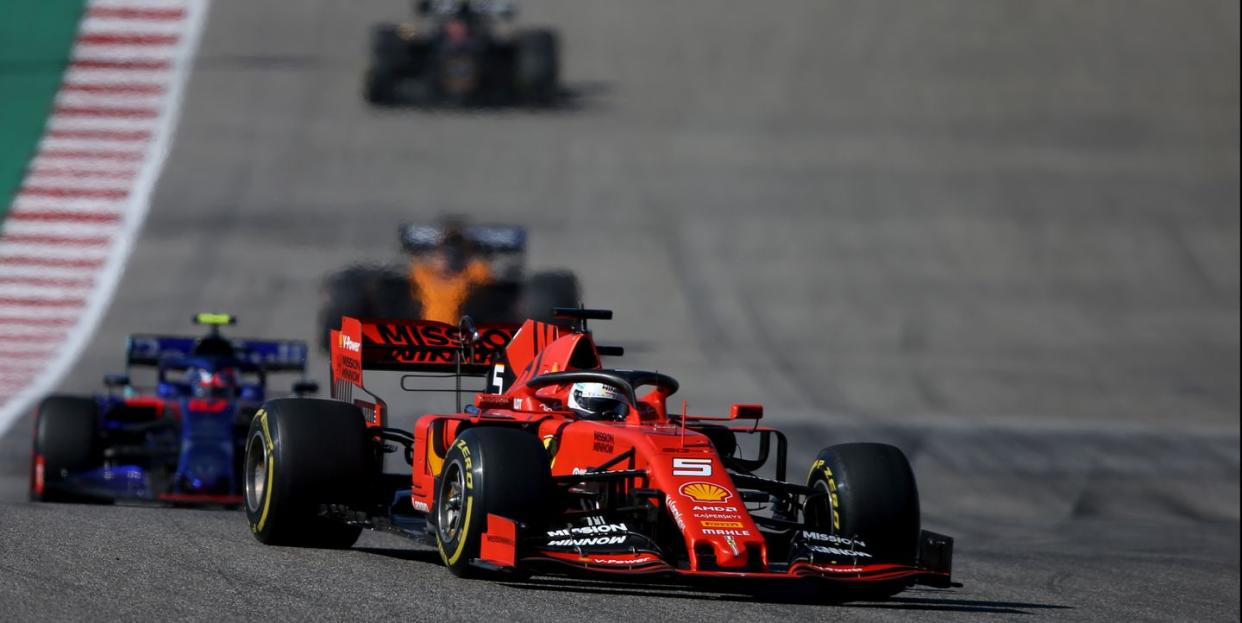Formula One's Path to Total Carbon Neutrality

Formula One announced concrete plans to be carbon neutral by 2030.
The organization has innovated over time in ways that improve the sport and help consumer car design.
The move to carbon neutrality is an ambitious but natural extension of F1’s existing philosophy.
Engadget reports that Formula One (F1) will achieve carbon neutrality by 2030. In its own press release, F1 says its current hybrid power unit, plus some extras, will allow it to move toward total carbon neutrality and, in turn, help upgrade the world’s one billion combustion-engine vehicles.
F1’s big talk might sound farfetched, but its racing technology has trickled down into consumer vehicles in many ways, from specifics like the clutchless manual (“flappy paddle”) transmission to the lightweight materials that help F1 cars achieve wild speeds.
F1’s announced timeline of carbon neutrality by 2030 also feels tantalizingly short; what drastic steps is it taking to get there? It turns out F1 has already made big moves toward carbon neutrality by introducing a hybrid power unit that’s essentially required in F1 racing. Since 2009, F1 cars have technically been hybrids because of the KERS, or kinetic energy return system, which uses exhaust to store energy that can add horsepower in short bursts.
Over time, F1 regulations on fuel quantity and burn rate have incentivized many more hybrid developments. This kind of setup has likely inspired people like the Maersk official who wants overseas shipping to use a power cap, not a speed limit, because Maersk is ready to maximize its power in other ways that use less fossil fuel.
And on F1’s part, this isn’t all environmentalism by any means. Racing an F1 car is still really dangerous, and the governing group can never not have caps because of the direct proportion of speed and power to danger in the sport.
The environmentalism comes afterward as what the organization calls a “social” incentive: As manufacturers race, pun intended, to maximize their power output while still staying below the fuel cap, this allows the governing body to reduce those caps even more, which stays in line with public sentiment about fuel efficiency and environmentalism.
Mercedes-Benz compares a naturally aspirated (meaning no turbo, supercharger, or KRES) engine to the hybrid power unit that’s now standard across F1 racing on its website. As Mercedes executive Andy Cowell says on the site, “We’re now running at more than 47 [percent] thermal efficiency [...] with an ICE restricted to consuming fuel at a rate of just 100kg/hr. The old-fashioned, naturally aspirated engines peaked at 29 [percent] thermal efficiency [...] with a V10 that guzzled fuel at a whopping 194kg/hr.”
In other words, this decked-out V6 engine is more powerful, more heat-efficient, and consumes half the amount of fuel per hour as the old V10.
The intricate ecosystem of KERS, supercharger, and turbo is already reflected in some form in consumer cars, paralleling F1’s regulations over time. The V10 Cowell is describing came in 2005, when most sports cars still had V8s and BMW’s inline 6 was considered fuel-efficient. Today, even the last bastion of ludicrous aughties fuel splash, VW’s gigantic W16 engine used in Bugatti supercars since 2005, has been discontinued. BMWs replaced the I6 with a turbo 4 and V8s moved to turbo V6s.
Hybrid consumer car development has also paralleled F1 adoption of hybrid technology. The KERS used by F1 cars helps to boost almost exactly the same moments in acceleration that a Toyota Prius does, and saves fuel in a proportionate way. Whether you’re smashing the gas from a stop at a red light in suburban Ohio or shifting from first to third to fifth in five seconds in an F1 car, your car is absolutely hemorrhaging fuel at that moment.
Engadget speculates that one of the ways F1 could continue moving toward carbon neutrality is with truly carbon-neutral fuels like methane. Since some fuels already come from environmental pollutants like methane and carbon dioxide, using them doesn’t add any more carbon dioxide, for example. The full plan will appear on F1’s website with all the details.
You Might Also Like

